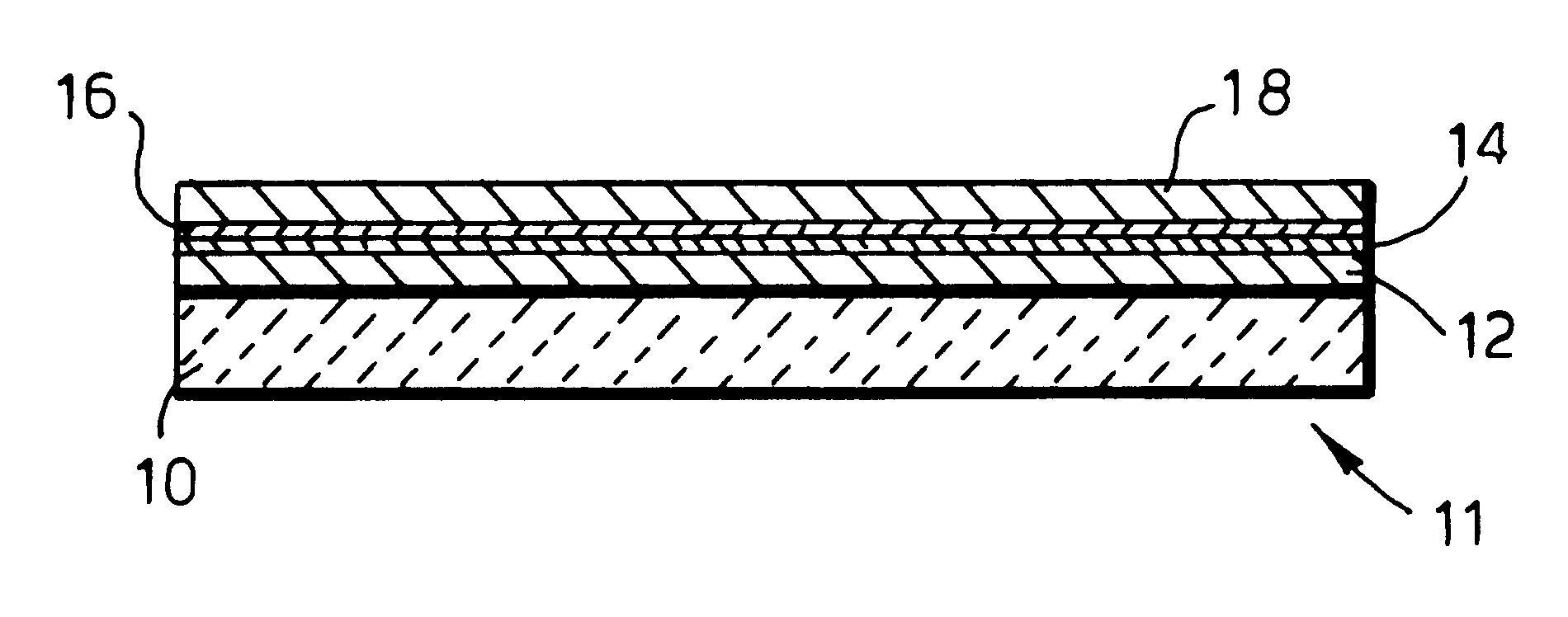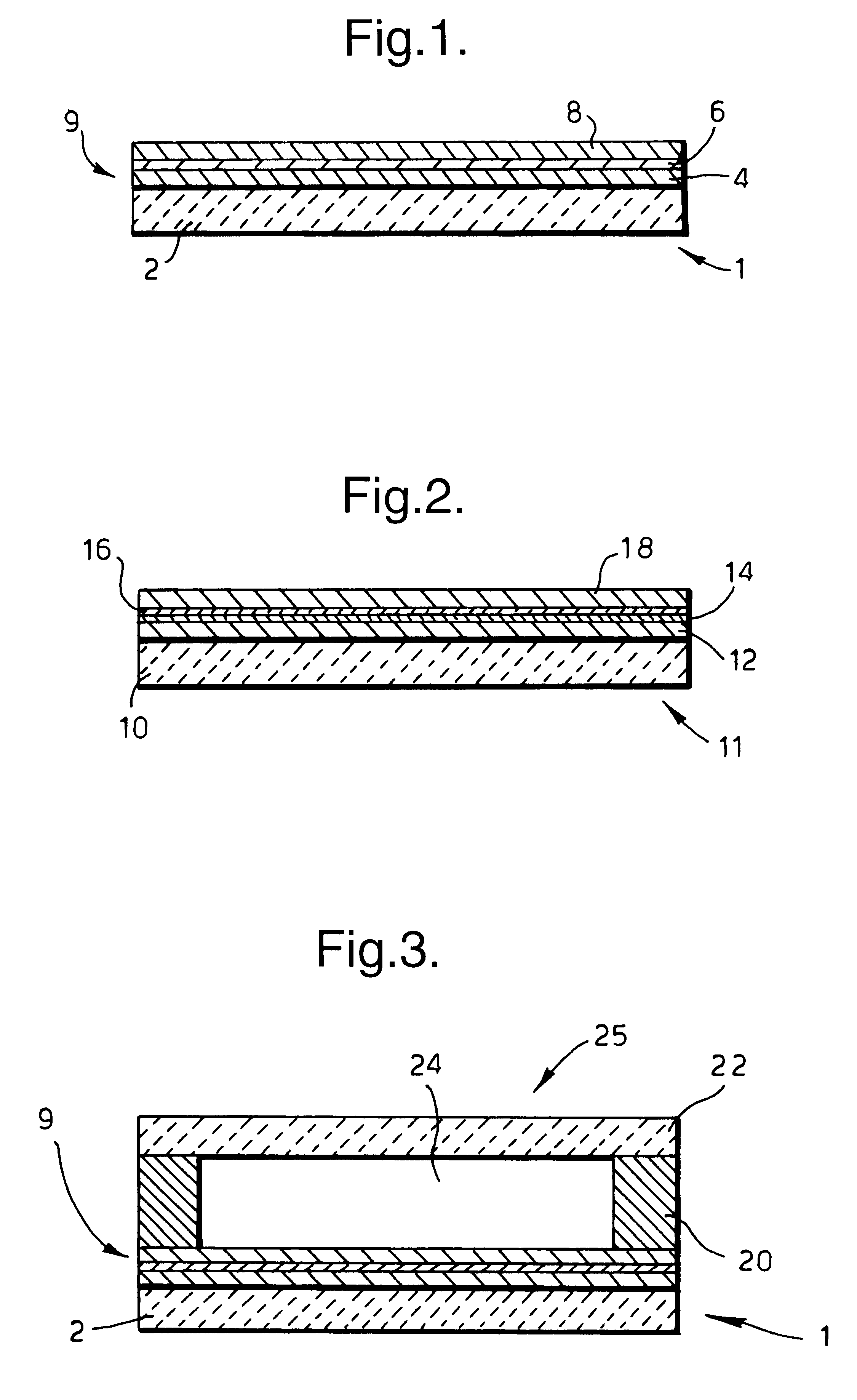Coating glass
a technology of coating glass and glass substrate, applied in the field of coating glass, can solve the problems of loss of the low emissivity properties of reflective metal layer, coating can lose the low sheet resistance and hence low emissivity, and the coating can be prepared by sputtering and have a layer of silver and a metal oxid
- Summary
- Abstract
- Description
- Claims
- Application Information
AI Technical Summary
Benefits of technology
Problems solved by technology
Method used
Image
Examples
second embodiment
FIG. 2 illustrates a section through a coated glass produced by a process in accordance with the invention.
FIG. 3 illustrates a section through a double glazing unit incorporating a coated glass as illustrated in FIG. 1.
Referring to FIG. 1, a low emissivity coated glass 1 comprises a glass substrate 2, and a coating 9 comprising a first anti-reflection layer of metal oxide 4, a silver layer 6 to provide infra red reflecting properties (low emissivity) and a second anti-reflection layer of a metal oxide 8. The metal oxide layers 4 and 8 comprise tin oxide, zinc oxide or tungsten oxide, and the second anti-reflection layer of a metal oxide 8 is deposited by reactive sputtering in the presence of methane.
FIG. 2 illustrates a similar coated glass to that illustrated in FIG. 1. A coated glass 11 comprises a glass substrate 10 and a coating comprising a first anti-reflection layer of a metal oxide 12, a silver layer 14 to provide infra red reflecting (low emissivity) properties, a protect...
examples 3 and 4
In these Examples, samples were optically analysed using a Hitachi U-4000 spectrophotometer over the wavelength range 300-2600 nm and a Perkin Elmer 883 spectrophotometer and values for the normal and / or the hemispherical emissivities (.epsilon..sub.N and .epsilon..sub.H) were calculated. The optical characteristics and total solar heat transmission (TSHT), U values and reflection and transmission CIE Lab colours were calculated in accordance with International Standard ISO 10292, and well known methods in the glass art.
Optical constants (refractive index, n and extinction coefficient, k) were obtained from the spectra and some spectra modelled in order to determine individual layer thicknesses. The layer thickness of some coated samples were measured using a Sloan Dektak IIID profilometer. The sheet resistance values were obtained using for example a Delcom Instruments Model 717B non-contact conductance monitor or a standard in-line 4-point probe. The double-glazed optical properti...
PUM
| Property | Measurement | Unit |
|---|---|---|
| sheet resistance | aaaaa | aaaaa |
| sheet resistance | aaaaa | aaaaa |
| thickness | aaaaa | aaaaa |
Abstract
Description
Claims
Application Information
 Login to View More
Login to View More - R&D
- Intellectual Property
- Life Sciences
- Materials
- Tech Scout
- Unparalleled Data Quality
- Higher Quality Content
- 60% Fewer Hallucinations
Browse by: Latest US Patents, China's latest patents, Technical Efficacy Thesaurus, Application Domain, Technology Topic, Popular Technical Reports.
© 2025 PatSnap. All rights reserved.Legal|Privacy policy|Modern Slavery Act Transparency Statement|Sitemap|About US| Contact US: help@patsnap.com


